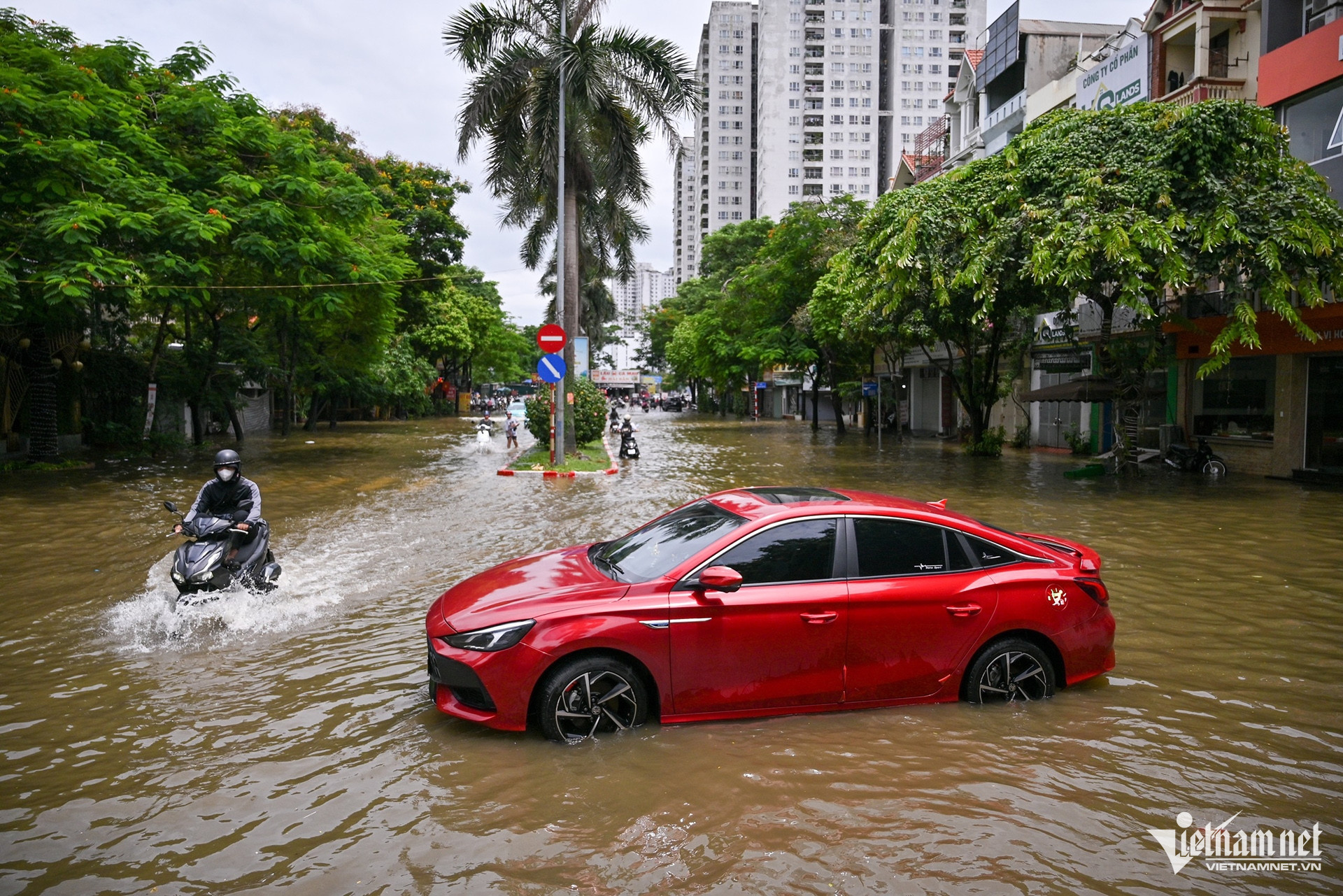
Starting from the night of July 28th, Northern Vietnam is set to experience widespread heavy rainfall lasting until the end of July 31st, due to the influence of a low-pressure trough connected to a low vortex developing from the surface up to an altitude of 5,000 meters.
The heaviest rain is expected in the midland and northern mountainous areas, with amounts ranging from 70 to 200 mm, and localized areas potentially receiving over 300 mm. The plains will see less rain, generally between 50 and 150 mm, with some spots exceeding 200 mm.
From August 1st, the low-pressure trough over the Northern region will weaken, leading to reduced rainfall and the return of sunshine. However, in the afternoons and evenings, the midland and northern mountainous areas may still experience thunderstorms.
The Meteorological Department has indicated that the heavy rainfall in the coming days will exacerbate the existing flooding in some low-lying areas of Hanoi and further complicate the recovery from recent landslides in mountainous regions. This poses a significant risk of flash floods, landslides, and worsening inundation in low-lying areas.
The American weather forecasting service Accuweather predicts that temperatures in Hanoi will range from 27-33 degrees Celsius at the start of the week, rising to a high of 35 degrees Celsius by midweek. High-altitude areas over 1,500 meters, such as Sa Pa (Lao Cai), will see nighttime temperatures of 17-18 degrees Celsius, increasing to 20-27 degrees Celsius during the day.
In the central region, provinces like Thanh Hoa and Nghe An will also be affected by the northern low-pressure trough, bringing rain showers and thunderstorms on July 30-31. From Ha Tinh to Binh Thuan, rainfall will be minimal, with daily high temperatures ranging from 34-36 degrees Celsius.
In the Southern region and the Central Highlands, the southwest monsoon will continue to bring moderate intensity showers and thunderstorms, primarily in the afternoon and evening. Maximum temperatures in the Southern region will range from 31-33 degrees Celsius, and in the Central Highlands from 28-31 degrees Celsius.
As the southwest monsoon weakens in early August, rainfall will decrease, and temperatures will rise to 33-35 degrees Celsius in the Southern region and 29-32 degrees Celsius in the Central Highlands.
The Ministry of Agriculture and Rural Development has urged Northern provinces to quickly address the aftermath of recent floods and to review and reinforce areas prone to landslides and flash floods to ensure the safety of people and property during the upcoming heavy rains.
Provinces are also instructed to manage reservoir operations to ensure downstream safety, prepare for waterlogging protection in agricultural fields, industrial areas, and urban zones, and to mobilize rescue teams and equipment as needed.
PV